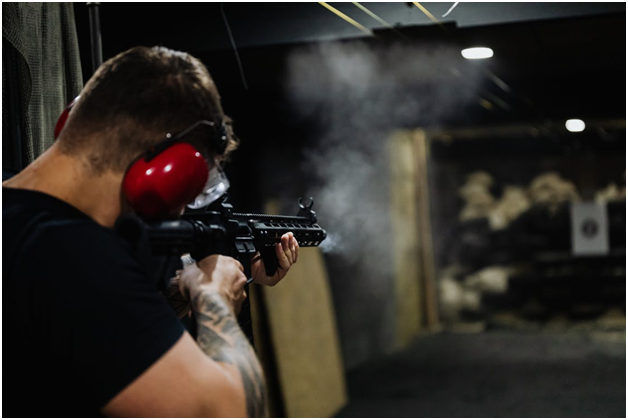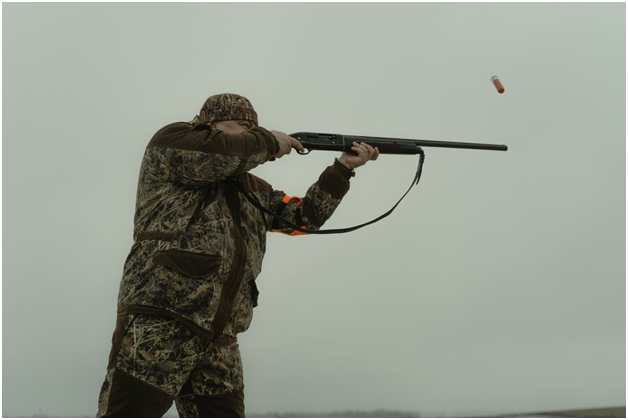What You Need to Clean a Gun [Plus Best Practices]
Feb 14th 2022
Keeping your firearm clean will ensure operability, safeguard accuracy, and help protect the firearm’s value. Letting your gun get dirty is a bad idea, but do you have everything you need to keep it in crisp, clean working order?
1.A gun cleaning rod
One of the most essential items for cleaning a gun is a gun cleaning rod. Make sure you use one that is made from a softer material than your bore. Many gun cleaning rods are made from aluminum or carbon fiber, both of which are softer than steel. Single-piece rods are stronger, but there are also 3 piece, collapsible rods that are common in travel cleaning kits.
2.Adapters
You’ll need adapters so you can attach jags and brushes to your cleaning rod. Make sure you get a shotgun adapter if you have a shotgun, as many of the cleaning attachments will not work with the 8x32 threads that are common with many cleaning rods.
3.Jags
A set of jags is useful for holding cleaning patches and keeping them in place while you swab the bore. Get several as they are sometimes made from plastic and can wear down. Brass jags are of higher quality, all things considered.
4.Brushes
Brass brushes are necessary for dislodging fouling from the inside of a bore. Though they are caliber-specific, one size brush can often be used to clean multiple bore calibers.
5.Mops
Mops are useful for distributing solvent or oil through the bore, but clean ones can also be used to dry the bore after you’ve cleaned it.
6.Patches
You’ll need tons of these. Paper patches are alright but cotton patches can sometimes be used several times. We recommend Hoppe’s or Outers.
7.Bore solvent
A bore that looks clean when held up to the light may actually be covered in caked on fouling. Bore solvent will help dissolve this fouling, helping to prevent corrosion.
8.Lubricating oil
A light coating of lubricating oil, like Hoppe’s or Rem Oil will help prevent moisture from reaching the surface of your gun’s components and will help keep them limber as well.
9.General cleaning brushes
You should also keep some nylon and brass cleaning brushes on hand to clean the exterior of your gun. Remember never to use a brush that is harder than the surface you are cleaning. For example, use brass on steel and nylon on brass or wood, and so on and so forth.

What if I don’t have a gun cleaning rod? (Or can’t break my gun down easily in the field?)
Not every cleaning kit contains a gun cleaning rod and some firearms, such as lever guns, can be difficult to take apart in the field. That’s why some field cleaning kits use a special device known as a bore snake to clean them,
A bore snake is basically a long flexible mop that can be drawn through the open action from barrel to muzzle. Sometimes they are impregnated with a cleaning brush to help clear out fouling. These can be serviceable alternatives to a cleaning rod when you’re hunting or on a trip away from the bench at home.
Gun Cleaning Tips:
1.Clean chamber to muzzle - always - and use a bore guide if you can.
Cleaning muzzle to chamber is a terrible idea because one slight with a brass jag or fouling scraper can damage the muzzle’s crowning, throwing accuracy way off. Always clean from chamber to muzzle, and use a bore guide if you can.
2.Don’t leave solvent or oil in the bore, use fresh patches till they come out white.
Leaving excess solvent in the bore, or too much oil, is a bad idea. Too much can cause barrel bulging on firing. In addition, excess oil inside the gum can adhere to dust or dirt and cause premature wear and tear. Always run fresh, clean, white patches through your bore until they come out clean. Leave no fouling any only a thin coating (at most) of oil inside the bore.
3.Drop out the trigger group and clean that, too.
Your gun’s trigger assembly is probably dirtier than you think. On many rifles and shotguns, the group can be dropped out with two pins. Clean the sensitive internals, wipe dry and reinstall.
4.If you’re cleaning a shotgun, don’t forget to clean the choke tube!

The pressure generated in a shotgun's barrel are more than sufficient to push fouling up underneath a removable choke tube’s threads. If you don’t believe us, take out your scattergun’s choke and see for yourself. Before you put it back in, clean off the fouling you found and light coat the threads in oil.
5.You don’t necessarily need to disassemble the gun every time.
After a quick trip to the range, you don’t need to take your whole gun apart. Just clean out the chamber and barrel and make sure the action is fluid. Deep cleans are only necessary every once in a while.
6.Don’t forget to clean the magazine.
Forgetting to clean your magazine is a real rookie mistake, because magazines absorb dirt, fouling, and oil just like every other piece of the gun. A few times per year, take your mag apart and swap out the interior, clean the spring and wipe off the follower. Then reassemble and make sure it’s working by feeding snap caps or dummy rounds (never live rounds!). That’ll keep your magazine clean and working for longer.
7.Use the right solvent.
Using the wrong solvent is an even scarier rookie mistake. Always be entirely sure that the solvent you’re using is compatible with your barrel’s interior finish or with any surfaces it will be allowed to contact. Failing to do so can ruin your firearm’s finish.
One more thing: using the wrong solvent will not remove fouling. Some solvents will not remove copper fouling, for example. Well, if your bullets are jacketed with copper - guess what you need - a solvent that can remove copper fouling!
The Gun Cleaning Essentials You Need and More!
Are you ready to drop the hammer on a new and improved cleaning routine for your collection? Put the pedal to the metal, so to speak?
We have the gun cleaning supplies you need, as well as the experience, to revamp the way you think about firearm maintenance. Check out our collection via the previous link and get in touch with us at 610-250-3960 if you have any questions.

![What You Need to Clean a Gun [Plus Best Practices] What You Need to Clean a Gun [Plus Best Practices]](https://cdn11.bigcommerce.com/s-68ehg8csas/images/stencil/351x462/uploaded_images/pra1.png?t=1644842541)